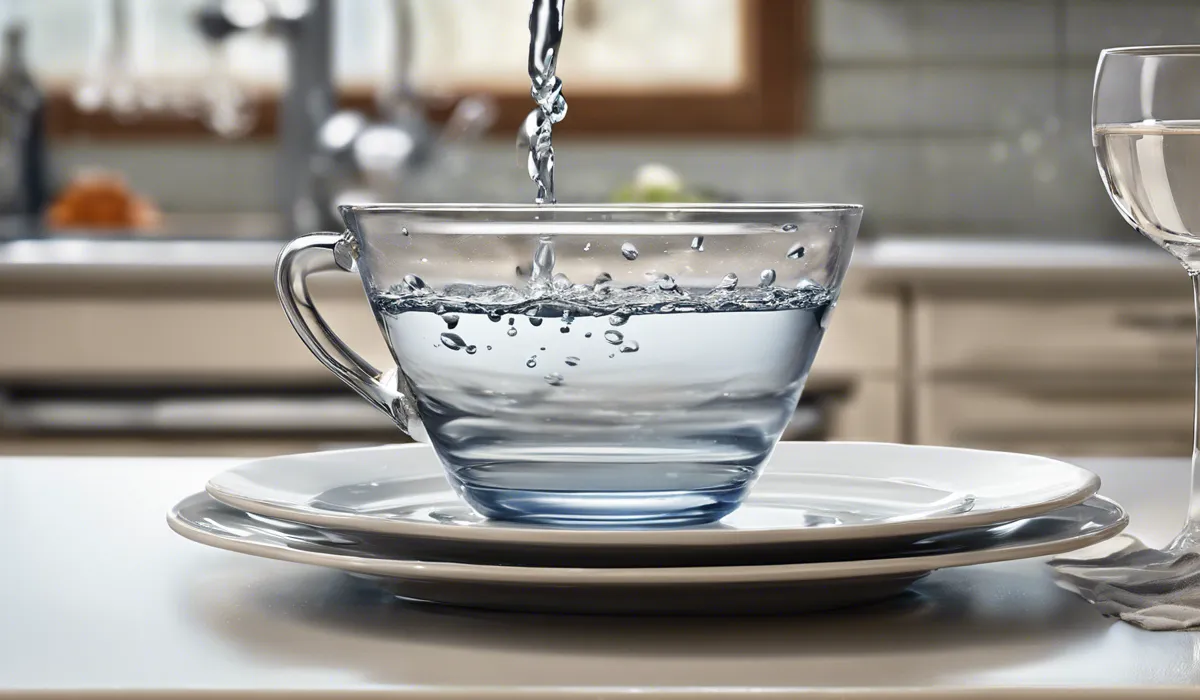How to Prevent Water Spots on Dishes in Dishwasher: Sparkle Tips
To prevent water spots on dishes in a dishwasher, use rinse aid, choose a high-heat drying cycle, and ensure water softness. Avoid overloading the dishwasher and remove dishes promptly after the cycle ends.
Understanding Water Spots on Dishes

What Are Water Spots?
Water spots are those pesky white streaks or cloudy residues that you might find on your dishes after they have gone through a dishwasher cycle.
They are caused by minerals in the water that remain on the surface after the water has evaporated. If you’ve ever noticed these spots after retrieving your dishes, you know how they can detract from the sparkling clean look you desire.
The Effect of Hard Water
Hard water, which contains high levels of minerals like calcium and magnesium, is a common culprit behind water spots.
These minerals can form a bond with your dishes during the washing process, and when the water dries, they leave behind the unsightly spots we all want to avoid.
Rinse Aid and Water Spots
Rinse aid is a dishwasher additive designed to tackle the problem of water spots. It works by breaking the bond between water molecules and your dishes, causing water to form thin sheets rather than droplets.
This means that when the water evaporates, it doesn’t leave behind the same mineral deposits that cause spotting.
How Rinse Aids Enhance Drying Efficiency
Not only do rinse aids prevent water spots, but they also improve the drying process.
By encouraging water to spread out and off of your dishes, rinse aids help to speed up the evaporation process, thus enhancing the overall efficiency of your dishwasher’s drying cycle.
Proper Loading and Dishwasher Maintenance

Optimal Loading of Dishes
To get your dishes clean and spot-free, it’s crucial to load them correctly. Ensure that there is enough space between dishes for water to circulate.
Place the dirtier side facing the spray arms and avoid nesting bowls or overlapping plates which can block water and detergent.
Regular Dishwasher Cleaning
Maintaining your dishwasher is key to its performance. Regularly wipe down the door seals, remove any food scraps from the base, and run a cleaning cycle with a dishwasher cleaner to keep it in tip-top shape.
Cleaning Spray Arms and Filters
The spray arms and filters of your dishwasher play a significant role in its functionality.
Clogged spray arms can prevent water from reaching all surfaces of your dishes, and a dirty filter can recirculate food particles, leading to spots and streaks. Clean these components often to maintain optimal performance.
Maintenance Tips for Peak Performance
Besides regular cleaning, check your dishwasher’s manual for specific maintenance recommendations. This might include inspecting hoses for signs of wear or ensuring that the dishwasher is level to prevent water from pooling in certain areas.
Tips for Spotless Dishes

Choosing the Right Detergents and Rinse Aids
Selecting the right detergent is essential for clean, spotless dishes. Look for detergents that are specifically designed to combat hard water and pair them with a quality rinse aid.
Together, these products can significantly reduce the likelihood of water spots forming.
Vinegar: A Natural Solution
For a natural approach to preventing water spots, consider using vinegar. Fill a dishwasher-safe cup with white vinegar and place it on the top rack during a cycle.
The vinegar will mix with the wash water, helping to dissolve mineral buildup and leaving your dishes spot-free.
Adjusting Dishwasher Settings
Modern dishwashers often come with adjustable settings that can help prevent water spots.
Increase the water temperature to help dissolve detergent and minerals more effectively. Additionally, choose a high-heat drying cycle to evaporate water quickly and reduce the chance of spots.
Preventing Spots Through Timely Unloading
Once the dishwasher cycle is complete, try to remove dishes promptly. This helps to avoid the formation of water spots that can occur when dishes are left to cool and dry inside the machine for an extended period.
Final Thoughts on Water Softness and Dish Care
Softening your water can have a dramatic effect on the appearance of your dishes. Consider installing a water softener or using additives designed to soften the water entering your dishwasher.
With softer water, your dishes are less likely to develop those frustrating water spots.
FAQs About Preventing Water Spots on Dishes in Dishwasher
How can I use rinse aid to prevent water spots on my dishes?
Add rinse aid to your dishwasher’s designated compartment before starting a wash cycle to reduce water spots by improving the water’s ability to sheet off dish surfaces.
Does the drying cycle affect water spots on dishes?
Yes, selecting a high-heat drying cycle can help evaporate water quickly, reducing the likelihood of water spots forming.
How does water softness contribute to preventing water spots?
Soft water contains fewer minerals that can cause spotting, so ensuring your water is softened can help prevent water spots on your dishes.
Can overloading the dishwasher lead to water spots?
Yes, overloading the dishwasher can hinder water circulation and drying, increasing the chance of water spots. Load dishes with enough space between them for optimal results.
Why is it important to remove dishes promptly after the dishwasher cycle?
Removing dishes promptly after the cycle can prevent condensation from settling on the dishes, which may lead to water spots.
Final Thoughts
To avert water spots on dishes after a dishwasher cycle, incorporating rinse aid is crucial. Opting for a high-heat drying cycle assists in evaporation, while managing water softness combats mineral deposits.
It’s equally important to avoid overloading to ensure thorough cleaning and to remove dishes promptly once the cycle concludes to prevent residue from settling.





